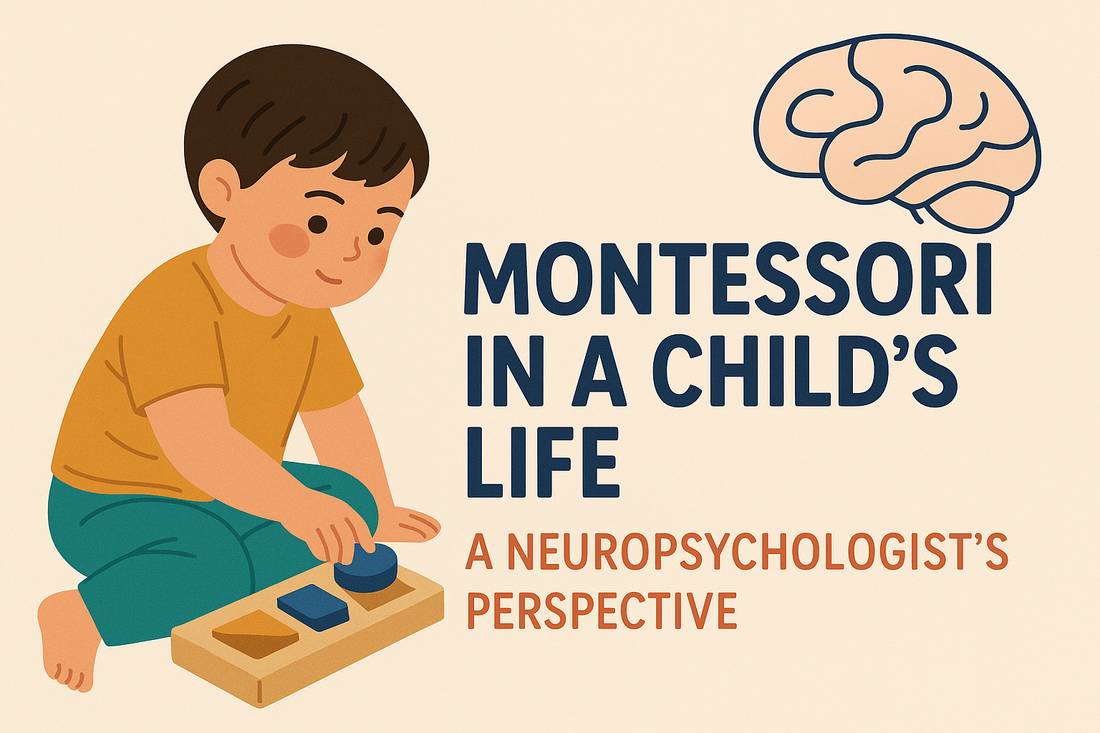
Montessori in a Child's Life: A Neuropsychologist’s Perspective
Share
🧠 Montessori in a Child's Life: A Neuropsychologist’s Perspective
📌 Introduction
The Montessori method is more than just an educational style — it’s a philosophy that honors the child’s individual development, independence, and freedom within structure. Created by Maria Montessori over a century ago, this approach is now widely used in both general and special education programs.
As a child neuropsychologist, I see in Montessori a profound way to support the formation of healthy neural pathways, the development of fine motor skills, memory, attention, and emotional intelligence.
🔍 Why the Brain Loves Montessori
Neuroscience confirms that between birth and age six, children’s brains undergo rapid development:
- 📈 The prefrontal cortex (responsible for regulation and planning) grows rapidly
- 🧩 Sensory maps of the brain (touch, hearing, sight) are being formed
- 🧠 Brain plasticity is at its peak — making it the ideal time to learn through action
🧩 Montessori Stimulates Key Brain Functions:
| Brain Function | Montessori Influence |
|---|---|
| Sensorimotor Integration | Tactile toys, sorters, hands-on activities |
| Focus & Attention | Child-led tasks within clear boundaries |
| Language Development | Object naming, story cards, dialogue |
| Planning & Self-Control | Freedom of choice with structure |
| Motivation | Joy of mastering tasks independently |
[Insert image of a child working with a wooden sorting toy here]
🧒 Everyday Montessori at Home
You don’t need a special classroom to apply Montessori principles at home:
- Prepared environment: Open shelves, child-accessible materials
- Child-sized furniture: Promotes confidence and independence
- Natural materials: Wooden and fabric toys stimulate real sensory input
- Order and simplicity: Helps build logic and routine
💡 Especially Effective for Children with Special Needs
The Montessori method supports children with:
- Developmental delays (DD)
- Autism spectrum disorders (ASD)
- ADHD
- Sensory processing challenges
Why it works:
- ✔ Predictable, structured environment
- ✔ Reduced sensory overload
- ✔ Individual pacing & autonomy
- ✔ Low-stress, playful learning context
[Insert graph comparing developmental progress in traditional vs Montessori environments here]
📘 Conclusion
Montessori isn’t a trend — it’s a scientifically grounded, child-centered approach to raising confident, capable humans. It nurtures both intellect and emotional strength through respectful and thoughtful design of the learning space.
For children, it offers freedom within safety. For parents, it provides the joy of witnessing self-motivated growth.
📌 Ready to Try It?
Explore our Montessori-inspired educational sets developed with the help of educators and child specialists — made from safe, eco-friendly materials.
🖼 Suggested Visuals:
- Photo of child with wooden shape puzzle or frame
- Montessori home setup (small chair, shelf, child-accessible tools)
- Maria Montessori portrait with quote:
“The child is both a hope and a promise for mankind.”
